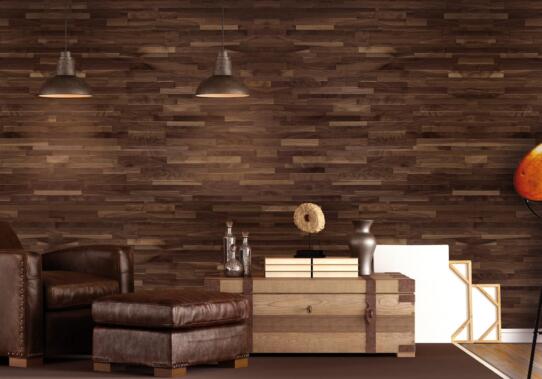Textured wall panels are revolutionizing interior design, turning plain walls into stunning focal points. With their intricate three-dimensional patterns and tactile charm, these panels bring depth, luxury, and visual intrigue to any space.
Whether you’re redesigning a living room, creating a feature wall, or refreshing a commercial setting, textured wall panels offer endless possibilities to elevate your décor.
More than just a design statement, textured wall panels are incredibly versatile. They can complement modern minimalism, accentuate classic elegance, or add a bold, artistic touch to contemporary spaces.
Their practical benefits, such as durability and easy maintenance, make them a favorite choice for homeowners and designers alike.
In this guide, we’ll explore everything you need to know about textured wall panels, from their aesthetic appeal and functional advantages to installation techniques and upkeep tips.
Versatility of Textured Wall Panels
Textured wall panels come in a wide range of materials, designs, and styles, making them versatile for various interior design themes. From natural elements like bamboo, reclaimed wood, or stone to modern materials like gypsum or 3D-printed panels, there are options to suit any aesthetic.
Whether you prefer a rustic, industrial, contemporary, or even futuristic look, there are textured wall panels available to fulfill your design vision.
Related to: The Ultimate Sohnne Furniture Review: Products, Policies, and Everything in Between (2023 Review)
Benefits of Textured Wall Panels
Textured wall panels offer numerous benefits beyond their visual appeal. Firstly, they can enhance acoustics by reducing noise reverberation and creating a more pleasant sound environment. Secondly, they can disguise wall imperfections, such as cracks or uneven surfaces, providing a smooth and uniform appearance.
Additionally, textured wall panels can act as insulation, improving energy efficiency and temperature regulation. Lastly, they offer a non-permanent solution, allowing for easy installation and removal without damaging the underlying wall.
Installation Methods for Textured Wall Panels
Textured wall panels can be installed using various methods depending on the material and design. Some panels come with adhesive backing, allowing for a simple peel-and-stick application. Others require nails, screws, or clips for secure attachment.
Professional installation may be necessary for more complex or large-scale projects. It is important to follow the manufacturer’s instructions and ensure proper surface preparation for a successful installation.
Related to: Industrial Living Room Furniture: Creating Urban Elegance In 2023
Design Considerations for Textured Wall Panels
When incorporating textured wall panels into your space, consider the overall design concept, lighting, and the desired impact. Opt for panels that complement the existing elements, colors, and textures in the room.
Textured wall panels can be used as an accent on a single wall or applied to multiple walls for a more immersive effect. Experiment with different panel orientations, such as horizontal, vertical, or diagonal, to create visual interest and dynamic movement within the space.
Factors to Consider when Choosing Textured Wall Panels
When selecting textured wall panels for your space, it’s essential to consider various factors to ensure the best outcome. Here are key considerations to keep in mind:
- Style and Design: Determine the overall aesthetic you want to achieve. Consider the texture, pattern, and design of the panels and how they align with your existing decor and theme.
- Material and Durability: Assess the material options available for textured wall panels. Consider the durability, maintenance requirements, and longevity of each material. Look for high-quality materials that can withstand daily wear and tear.
- Installation and Compatibility: Evaluate the installation process and whether it aligns with your capabilities and timeline. Determine if the panels are compatible with your existing walls or if any modifications are needed for proper installation.
- Room and Space Suitability: Consider the specific room or area where the textured wall panels will be installed. Different materials and designs may be more suitable for certain spaces, such as living rooms, bedrooms, or commercial settings.
- Budget and Cost: Determine your budget for the textured wall panels, including the cost of materials, installation, and any additional accessories. Compare prices from different suppliers and consider the long-term value and quality of the panels.
- Maintenance and Care: Understand the maintenance requirements for the chosen textured wall panels. Some materials may require special cleaning methods or periodic upkeep. Consider your ability and willingness to maintain the panels accordingly.
- Personal Preference: Ultimately, choose textured wall panels that align with your personal taste and vision. Select designs and materials that resonate with you and create the desired ambiance and atmosphere in your space.
By considering these factors, you can make an informed decision when choosing textured wall panels that enhance the aesthetic appeal and functionality of your space, bringing dimension, style, and personality to your walls.
Conclusion
Textured wall panels offer a unique and versatile way to enhance the visual impact of any space. With their dimensional patterns, tactile textures, and wide range of materials, they bring depth, character, and style to walls.
Whether used as an accent or applied to entire rooms, textured wall panels have the power to transform ordinary walls into extraordinary design statements.
Consider the versatility, benefits, installation methods, design considerations, and maintenance tips discussed in this article to incorporate textured wall panels into your interior design projects with confidence.





